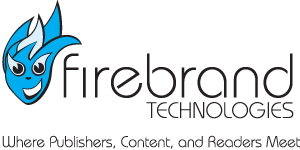
Winning the Digital Shelf: Online Merchandising Strategies for Retail Success
Success in online book sales isn’t just about having a great title—it’s about how that title is presented. From search rankings to product pages, the way a book is listed can make or break its visibility and sales potential. This article explores the key strategies publishers need to utilize when mastering the digital shelf and turning metadata into a powerful marketing asset.
Understanding Product Listing Marketing
Online sales comes down to three key concepts:
- Discoverability: Can your book be found?
- Searchability: Does it show up in relevant searches?
- Sellability: Once found, does it convince a customer to buy?
While search is customer-driven in online retail, the results are publisher-directed. That means metadata—not the book itself—determines whether a title gets seen and sold. In brick-and-mortar bookstores, discoverability is tactile and often serendipitous—a reader could be on their way to the mystery section and stumble upon a nonfiction book that catches their eye. They can pick it up and flip through it with ease.
Online sales are not like that. People search online for books 24 hours a day—nonstop—all around the world and, more importantly, they deliberately search by topic, genre, or interest. Your job as a publisher is to ensure that your book shows up in those moments.
“Products don’t get found online. Their product information does.” — Kevin Franco, Director of Special Projects at Firebrand Technologies and our in-house retail expert
To succeed, publishers must treat product listings as marketing tools—strategically optimized to capture attention and convert sales.
How to Improve Your Search & Sales
At Firebrand Technologies, we recommend two tactics to improve a book publisher’s product listing marketing.
1. Book Exposure Optimization (BEO)
BEO is about optimizing quantitative metadata and is similar to SEO (Search Engine Optimization). BEO is designed to win search rankings and enhance discoverability. These optimizations speak to algorithms, not people.
Examples: Keywords, BISAC subjects, Audience codes
2. Conversion Rate Optimization (CRO)
CRO is about optimizing qualitative metadata that focuses on sellability—how your listing persuades browsers to buy. These elements speak directly to humans, helping shoppers feel confident in their decision to purchase.
Examples: Book description, author bios, secondary images, A+ content
Think of it this way: BEO helps you get found. CRO helps you get chosen. You need both. Relying on BEO alone may boost your ranking, but if listings don’t convert to sales, retail store algorithms will reduce the visibility of your title in favor of higher-performing products.
For more information on BEO and CRO, read our Metadata Minute issue.
Tips to Enhance Your Retail Listings
Here are some practical takeaways for publishers looking to improve both discoverability and conversion:
Write for your audience
For keywords, the “audience” is the algorithm. Use keywords that your audience is likely to type into the search bar—not just descriptors of the book. Think like a reader, not just a publisher.
Advertisements and Promotions
Never underestimate the power of social media and traditional advertising channels. Utilize your various channels to drive additional traffic to your product. Our sister company, NetGalley, recently announced their upcoming launch of Booktrovert to help publishers market directly to all types of consumers.
Visually Enhance your Book Description
Every book has a book description, but how effective is yours? Here are some suggestions that we recommend implementing for every single one of your titles (if possible).
- More is often better. Most retailers will take a description with up to 4,000 characters, so don’t feel like you need to keep it short. More content gives readers more to consider.
- Use bullet points, bold and italics, and other formatting strategies to improve readability.
- Include quotes from recent reviews and endorsements. We recommend placing these before your book description—not after.
- Include quality copywriting. Think about intent. If you were reading this book description, what would you want to know? What would intrigue you?
Images, images, images
Your cover image is not strong enough to sell your title on its own. There are so many opportunities to add extra images to your title that don’t have to be time consuming. Here are some suggestions:
- For visually dynamic books, include screen shots of the book interior.
- Include pictures of the book being held, on a table, in front of a cup of coffee, or something similar.
- Back cover images, 3D images, etc.
- A+ content can also be very powerful! You can include images with quotes from the author, reviews, or endorsements.
Update Author Bios
Missing author bios is an extremely common problem on retail product pages. Some online retailers will auto-populate author bios with incorrect information; therefore, make a habit to regularly check your author bios. Ensure they’re present, current, and relevant to the title.
We understand this all sounds like a lot—and it is, especially if you’re attempting to improve your backlist titles. Firebrand Technologies offers so many helpful products and services to make all of this easier.
- Flywheel is an extremely successful sales and marketing service, with metadata changes executed by our team and supported by a powerful recommendation engine and other tools. We improve your backlist metadata so your books’ BEO and CRO are set up for success.
- Eloquence on Alertis a unique retail compliance auditing tool that helps your team ensure your online listings are optimized and showing up as intended.
For more information and a free demo of any of our services, please reach out to our sales director:
Joshua Tallent | Director of Sales and Education | joshua@firebrandtech.com
